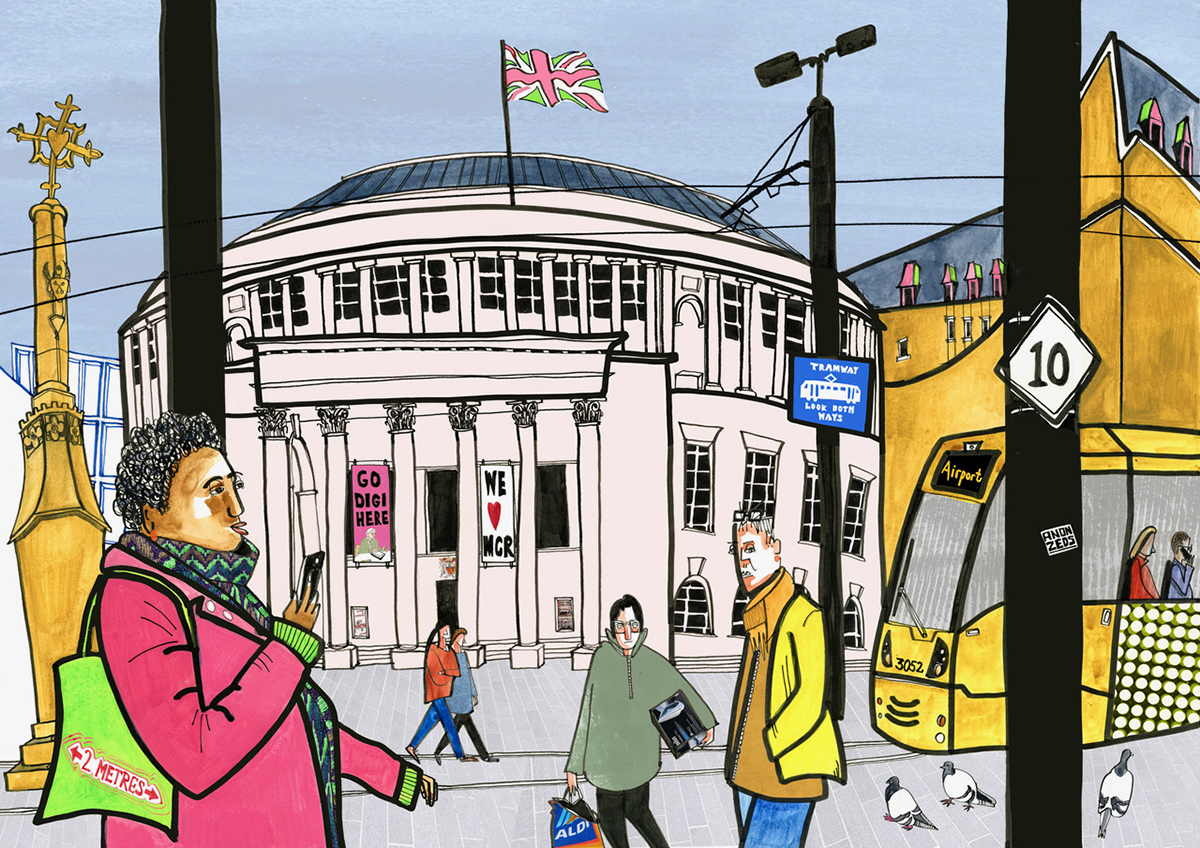
Just that…well, not a lot of arts and culture has been accessible since then. Things seemed like they might be beginning to end. But we were all fooled. That feature was about Len Grant’s retrospective book – ’30 Years of Storytelling’ – created during the first lockdown.
Whilst in the first paragraph I said that not a lot has been accessible, a lot has been happening. The arts have found new ways of communicating, particularly the performing arts. Meanwhile, the graphic arts have been quietly working away and reflecting in different ways about what the World has been through.

I picked up a copy of Luke Adam Hawker’s lovely book ‘Together,’ reflecting on and illustrating lockdown. Illustrations and words – by Marianne Laidlaw – are housed in a hardback, beautifully produced memento of what we, the World, have experienced.
Sparse words that tell a story: ‘Fear can be a funny thing. It can make us forget that others are scared too.’ Luke’s architectural background creates linear, black and white drawings that capture the pathos of isolation. Such as an aerial view of a grand street with one lonely figure. ‘Life’s engine ground to a halt.’



I see the book somehow as a vital and beautiful record of these months and years, outside of the news programmes and inevitable documentaries that will accompany us every anniversary decade from now on. Words and pictures that capture the emotions and not just the facts.

On the other hand, Len Grant has gone large. His sketchbooks have turned into large works, bridging the gap between what he has missed and what he sees returning. Having paid a fleeting visit to Escape to Freight Island, the 12 drawings are now on show on the fencing around Urban Splash’s Waulk Mill and from May 17th will move to Qbic on Deansgate.

Len says that he wanted to capture the things he missed about his City and the things he was looking forward to as we reach the beginning of the end.
A usual, bold and whimsical style captures people and places that over the past year have been places without people. His favourite places.

The words accompanying the drawings – in contrast to the stripped down pathos of Luke’s book – are a listing of what Len has missed: ‘baristas, traffic wardens, rice ‘n’ three at This and That, latté-laden hipsters, the basement of Fred Aldous.’ The list goes on.
This lockdown has been truly dark and miserable hasn’t it?

Len’s drawings look forward to a bright future with bright drawings. They’re not a record of what has been, as is Luke Adam Hawker’s book and Marianne Laidlaw’s words. But the contrasting two make a good pair, a good history. Two different ways of looking at lockdown: forwards and backwards.
The closing words with Len’s drawings are: “They say cities will change. They say we’ll use them less and Zoom more. Not me. I’ve missed Manchester. I’m glad to be back.”

